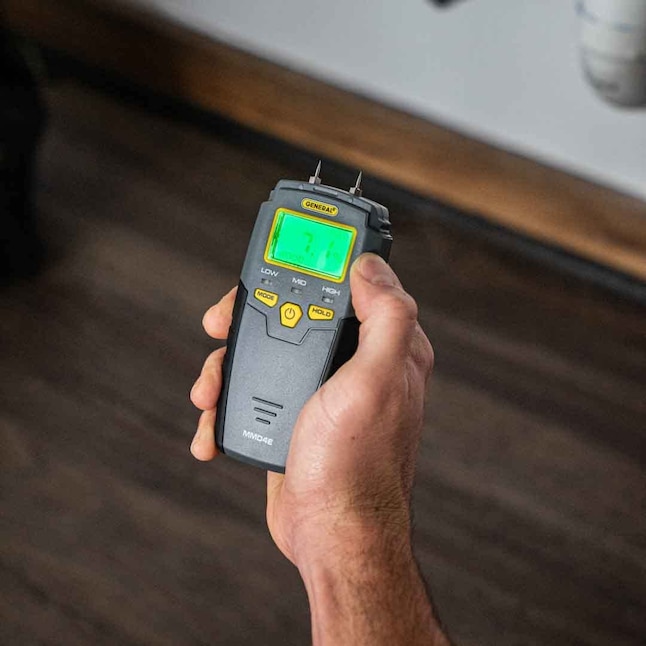Why Every Home Owner Requirements a Moisture Meter: Trick Advantages and Functions
Why Every Home Owner Requirements a Moisture Meter: Trick Advantages and Functions
Blog Article
The Ultimate Overview to Dampness Meters: A Comprehensive Summary and How They Can Conserve You Cash
In the realm of structure maintenance, construction, and numerous markets, the relevance of precisely determining moisture levels can not be overstated. Dampness meters offer as vital tools in finding and monitoring moisture web content in materials, assisting in protecting against expensive damages and making certain the high quality of items. Understanding the nuances of different sorts of wetness meters, their applications, and the prospective cost-saving advantages they supply can be a game-changer for services and specialists alike. Finding just how these devices can not just improve procedures however additionally contribute to financial savings is a journey worth beginning on.
Types of Moisture Meters
One common kind is the pin-type moisture meter, which determines the electric resistance between 2 pins put right into a product. Pinless dampness meters, on the other hand, usage electromagnetic sensor plates to scan a larger location without creating damages to the product's surface.

Furthermore, there are also specialty wetness meters designed for specific products like grain, dirt, or hay. These meters give accurate dampness analyses tailored to the unique homes of the material being tested. Infrared dampness meters determine the thermal residential or commercial properties of a product to establish its wetness web content non-invasively, making them valuable for applications where pin or pinless meters may not appropriate. Understanding the various sorts of wetness meters offered can assist markets pick one of the most proper tool for their specific dampness dimension demands.

Advantages of Utilizing Wetness Meters
Moisture meters offer vital benefits in accurately monitoring and analyzing moisture levels in varied materials and settings (Moisture Meter). One of the key advantages of using moisture meters is the avoidance of potential damages triggered by excess dampness. By spotting and dealing with high wetness degrees at an early stage, moisture meters help to stop mold and mildew growth, rot, and structural damages in structures, saving both money and time on repair services. In addition, dampness meters help in ensuring the high quality of materials throughout building and construction or production processes. By accurately gauging dampness content, these tools help keep the integrity of timber, drywall, concrete, and various other products, reducing the threat of failures or flaws.
Furthermore, making use of dampness meters can lead to raised energy effectiveness. By determining locations with high moisture degrees, such as leaks or inadequate insulation, changes can be made to boost energy preservation and minimize energy expenses. In agricultural setups, wetness meters play a vital duty in optimizing crop yields by making it possible for farmers to monitor dirt dampness degrees and make informed watering choices. Generally, the advantages of using wetness meters cover across different industries, providing affordable options and promoting far better quality assurance techniques.
Just How to Pick the Right Dampness Meter
When picking a dampness meter, it's vital to ensure that the meter is ideal for the certain material you will be testing. Various materials have differing electric properties that can impact dampness readings, so choosing a meter developed for your material is critical for accurate results. By meticulously examining these variables, you can select a moisture meter that meets your demands and gives accurate moisture measurements for your projects.
Appropriate Methods for Wetness Meter Use

Price Financial Savings Via Moisture Meter Applications
Just how can the strategic utilization of dampness meters bring about significant price financial savings throughout various industries? Wetness meters play a critical role in price financial savings by preventing potential damages and making certain quality assurance in different markets. In the agriculture market, wetness meters aid in establishing the ideal time for collecting plants, preventing excess or over-drying dampness that can affect the final item's high quality. This exact monitoring helps farmers stay clear of unneeded losses and maximize their return.
Similarly, in building and construction, moisture meters aid avoid pricey damages by spotting moisture degrees in building materials, such as timber or home concrete, which can result in architectural concerns otherwise attended to promptly. By determining trouble areas early, professionals can take rehabilitative steps to stay clear of extensive repair services or substitutes, ultimately saving money and time.
In addition, in the food processing industry, dampness meters are important for keeping an eye on item top quality and ensuring compliance with security guidelines. By properly gauging moisture material in food items, makers can protect against spoilage, maintain freshness, and decrease waste, leading to considerable price savings. Overall, the critical application of dampness meters is a useful financial investment that can cause considerable cost decreases and improved performance across various markets.
Final Thought
In final thought, dampness meters are beneficial tools for finding and determining wetness levels in different materials. By using the best dampness meter and following appropriate techniques, individuals can effectively discover here prevent expensive problems caused by excess dampness.
Moisture meters offer as vital devices in finding and checking moisture content in materials, assisting in preventing expensive problems and ensuring the high quality of products. Infrared moisture meters determine the thermal residential or commercial properties of a product to identify its wetness material non-invasively, making them helpful for applications where pin or pinless meters may not be suitable.Dampness meters offer invaluable advantages in precisely evaluating and checking wetness degrees in diverse products and environments. In agricultural settings, dampness meters play an essential role in optimizing crop yields by allowing farmers to check soil wetness levels and make notified watering decisions.In final thought, wetness meters are valuable devices for spotting and measuring moisture degrees in various products.
Report this page